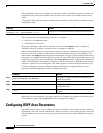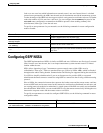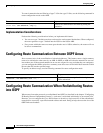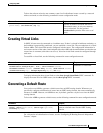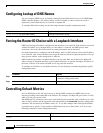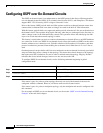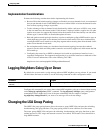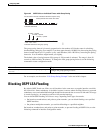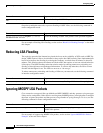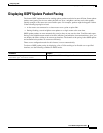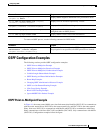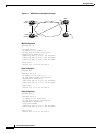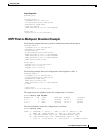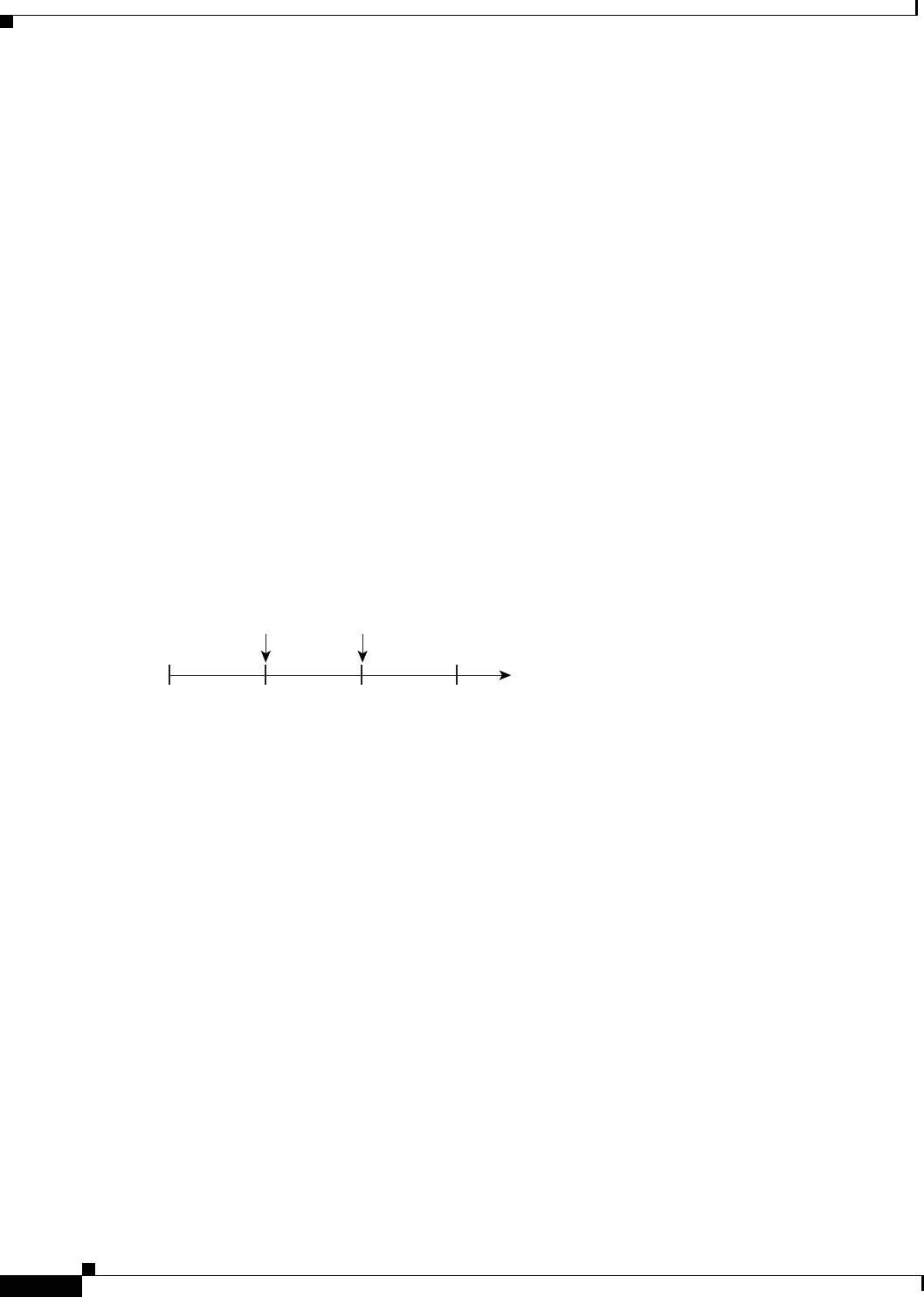
Configuring OSPF
Changing the LSA Group Pacing
IPC-236
Cisco IOS IP Configuration Guide
OSPF LSA group pacing is enabled by default. For typical customers, the default group pacing interval
for refreshing, checksumming, and aging is appropriate and you need not configure this feature.
Original LSA Behavior
Each OSPF LSA has an age, which indicates whether the LSA is still valid. Once the LSA reaches the
maximum age (1 hour), it is discarded. During the aging process, the originating router sends a refresh
packet every 30 minutes to refresh the LSA. Refresh packets are sent to keep the LSA from expiring,
whether there has been a change in the network topology or not. Checksumming is performed on all
LSAs every 10 minutes. The router keeps track of LSAs it generates and LSAs it receives from other
routers. The router refreshes LSAs it generated; it ages the LSAs it received from other routers.
Prior to the LSA group pacing feature, the Cisco IOS software would perform refreshing on a single
timer, and checksumming and aging on another timer. In the case of refreshing, for example, the software
would scan the whole database every 30 minutes, refreshing every LSA the router generated, no matter
how old it was. Figure 39 illustrates all the LSAs being refreshed at once. This process wasted CPU
resources because only a small portion of the database needed to be refreshed. A large OSPF database
(several thousand LSAs) could have thousands of LSAs with different ages. Refreshing on a single timer
resulted in the age of all LSAs becoming synchronized, which resulted in much CPU processing at once.
Furthermore, a large number of LSAs could cause a sudden increase of network traffic, consuming a
large amount of network resources in a short period of time.
Figure 39 OSPF LSAs on a Single Timer Without Group Pacing
LSA Group Pacing With Multiple Timers
This problem is solved by configuring each LSA to have its own timer. To again use the example of
refreshing, each LSA gets refreshed when it is 30 minutes old, independent of other LSAs. So the CPU
is used only when necessary. However, LSAs being refreshed at frequent, random intervals would
require many packets for the few refreshed LSAs the router must send out, which would be inefficient
use of bandwidth.
Therefore, the router delays the LSA refresh function for an interval of time instead of performing it
when the individual timers are reached. The accumulated LSAs constitute a group, which is then
refreshed and sent out in one packet or more. Thus, the refresh packets are paced, as are the
checksumming and aging. The pacing interval is configurable; it defaults to 4 minutes, which is
randomized to further avoid synchronization.
Figure 40 illustrates the case of refresh packets. The first timeline illustrates individual LSA timers; the
second timeline illustrates individual LSA timers with group pacing.
30 minutes 30 minutes 30 minutes
Prior to pacing, all LSAs refreshed at once
All LSAs refreshed, 120 external LSAs on Ethernet need three packets
10341
É



